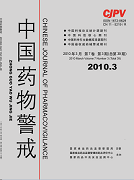|
|
Optimization Practice of The Medical Institutions Adverse Drug Reaction Monitoring Method
CHEN Chao, GUO Dai-hong, LIU Gui-yang, ZHU Man, PEI Fei, Ma Liang, WANG Bo
2010, 7(3):
164-167.
Objective To form systemic adverse drug reaction monitoring mode of the large-scale medical institution. Methods Practice on the basis of good hospital information system(HIS) operation environment and clinical pharmacy developement. Results The formation of grade 3 monitoring work team, 2 work rules, 6 procedures, a set of drug safety and emergency treatment process, a house journal, a bulletin, obtains ADR data acquisition, evaluation, analysis, early warning and transmission of electronic information, and combining with actual completed a series of drug safety evaluation of applied research. Conclusion Through the rules and process electronic platform construction, develop-ment, data utilization, emergency disposal and intersectorial work missionary training to optimize the exploration and practice of medical institution, obtains the solid outpost of drug safety and risk management.
References |
Related Articles |
Metrics
|
